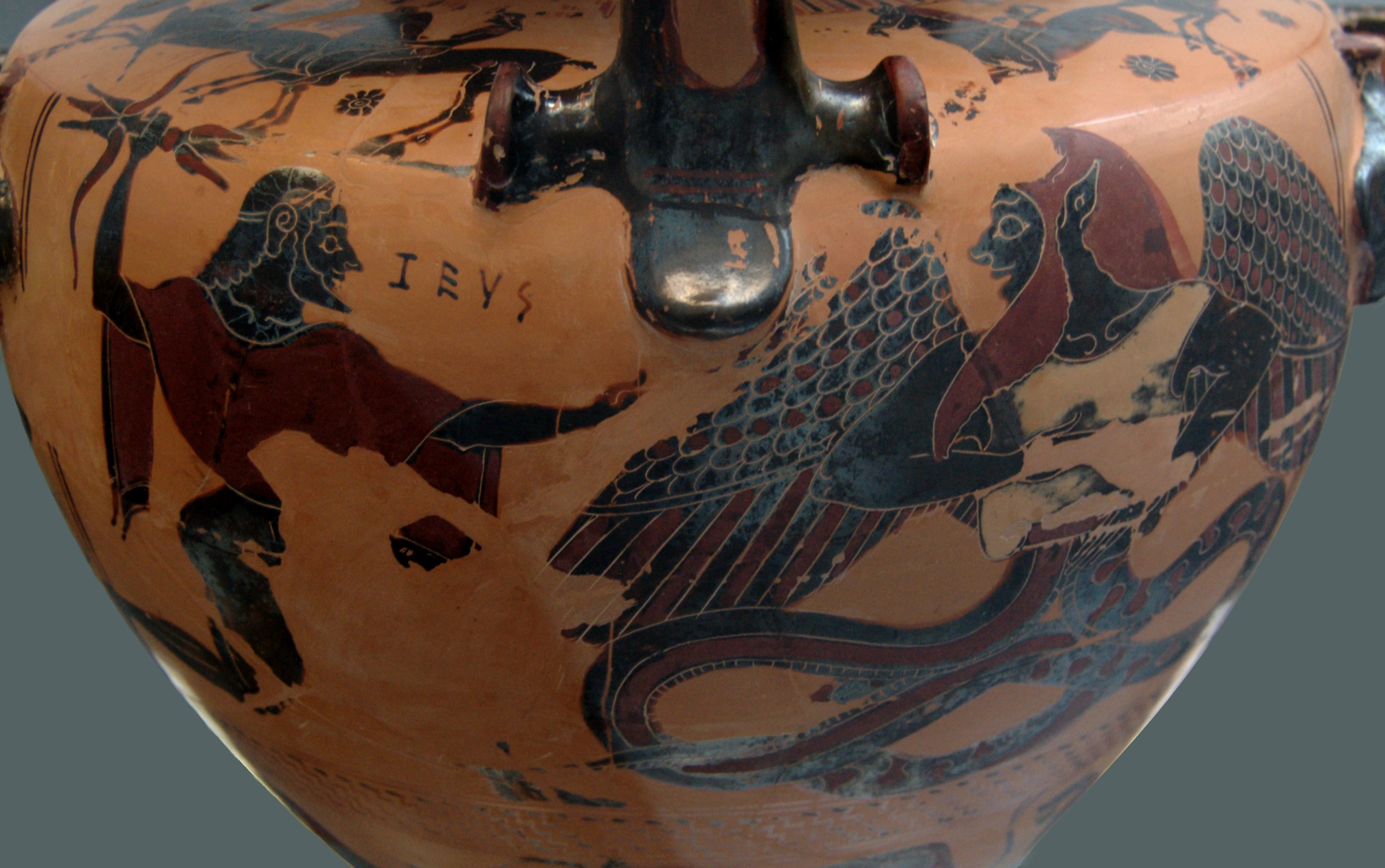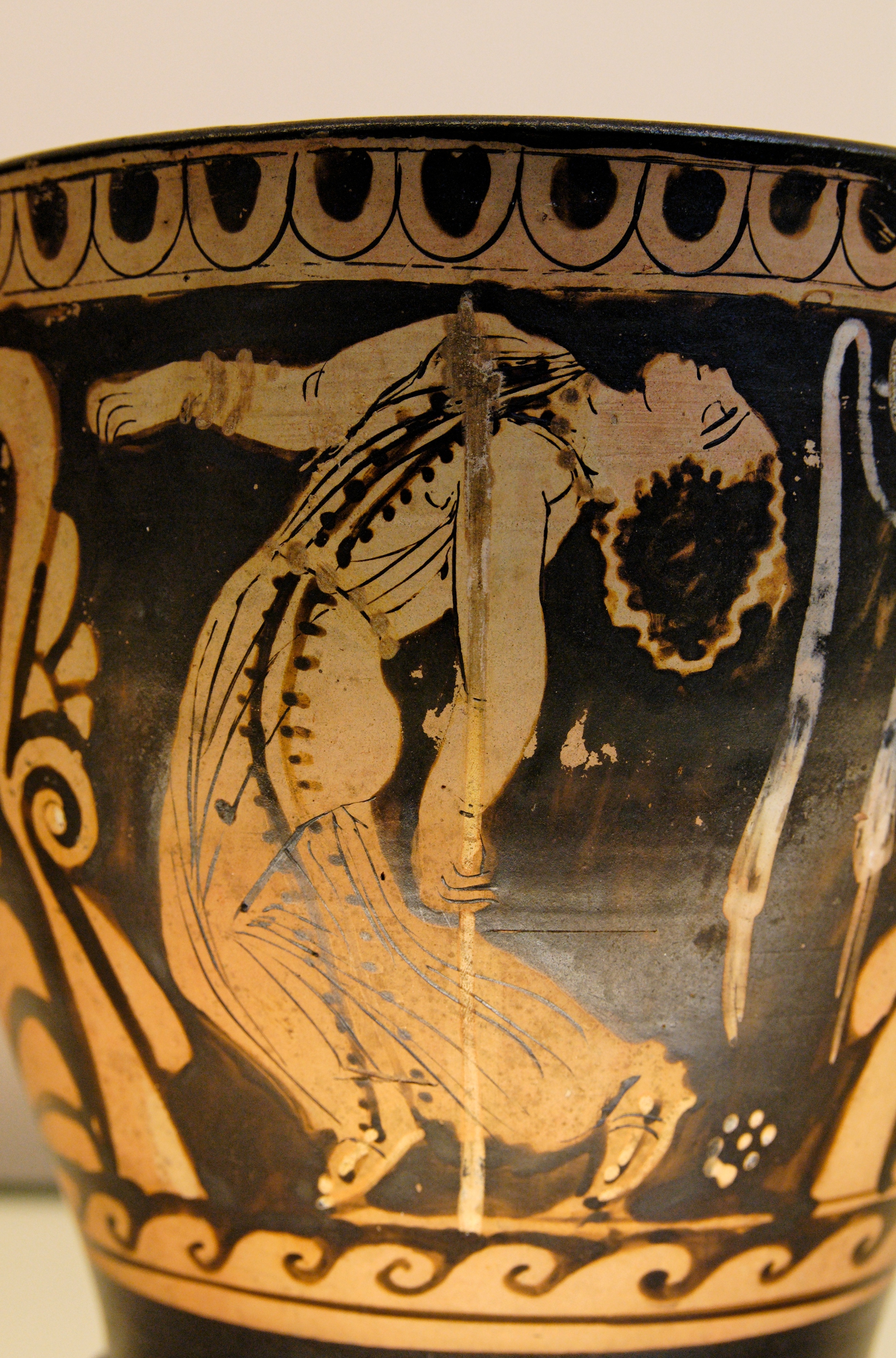|
Eurypyle (maenad)
In Greek mythology, Eurypyle (Ancient Greek: Εὐρυπύλην) was a maenad. She was a follower of Dionysus and was killed by Morrheus.Nonnus, 30.222 Note References * Nonnus of Panopolis, ''Dionysiaca The ''Dionysiaca'' (, ''Dionysiaká'') is an ancient Greek epic poem and the principal work of Nonnus. It is an epic in 48 books, the longest surviving poem from Greco-Roman antiquity at 20,426 lines, composed in Homeric dialect and dactylic hex ...'' translated by William Henry Denham Rouse (1863-1950), from the Loeb Classical Library, Cambridge, MA, Harvard University Press, 1940.Online version at the Topos Text Project.* Nonnus of Panopolis, ''Dionysiaca. 3 Vols.'' W.H.D. Rouse. Cambridge, MA., Harvard University Press; London, William Heinemann, Ltd. 1940-1942Greek text available at the Perseus Digital Library Maenads Companions of Dionysus Women in Greek mythology {{Greek-myth-stub ... [...More Info...] [...Related Items...] OR: [Wikipedia] [Google] [Baidu] |
Greek Mythology
Greek mythology is the body of myths originally told by the Ancient Greece, ancient Greeks, and a genre of ancient Greek folklore, today absorbed alongside Roman mythology into the broader designation of classical mythology. These stories concern the ancient Greek religion's view of the Cosmogony, origin and Cosmology#Metaphysical cosmology, nature of the world; the lives and activities of List of Greek deities, deities, Greek hero cult, heroes, and List of Greek mythological creatures, mythological creatures; and the origins and significance of the ancient Greeks' cult (religious practice), cult and ritual practices. Modern scholars study the myths to shed light on the religious and political institutions of ancient Greece, and to better understand the nature of mythmaking itself. The Greek myths were initially propagated in an oral tradition, oral-poetic tradition most likely by Minoan civilization, Minoan and Mycenaean Greece, Mycenaean singers starting in the 18th century&n ... [...More Info...] [...Related Items...] OR: [Wikipedia] [Google] [Baidu] |
Ancient Greek
Ancient Greek (, ; ) includes the forms of the Greek language used in ancient Greece and the classical antiquity, ancient world from around 1500 BC to 300 BC. It is often roughly divided into the following periods: Mycenaean Greek (), Greek Dark Ages, Dark Ages (), the Archaic Greece, Archaic or Homeric Greek, Homeric period (), and the Classical Greece, Classical period (). Ancient Greek was the language of Homer and of fifth-century Athens, fifth-century Athenian historians, playwrights, and Ancient Greek philosophy, philosophers. It has contributed many words to English vocabulary and has been a standard subject of study in educational institutions of the Western world since the Renaissance. This article primarily contains information about the Homeric Greek, Epic and Classical periods of the language, which are the best-attested periods and considered most typical of Ancient Greek. From the Hellenistic period (), Ancient Greek was followed by Koine Greek, which is regar ... [...More Info...] [...Related Items...] OR: [Wikipedia] [Google] [Baidu] |
Maenad
In Greek mythology, maenads (; ) were the female followers of Dionysus and the most significant members of his retinue, the '' thiasus''. Their name, which comes from μαίνομαι (''maínomai'', “to rave, to be mad; to rage, to be angry”), literally translates as 'raving ones'. Maenads were known as Bassarids, Bacchae , or Bacchantes in Roman mythology after the penchant of the equivalent Roman god, Bacchus, to wear a bassaris or fox skin. Often the maenads were portrayed as inspired by Dionysus into a state of ecstatic frenzy through a combination of dancing and intoxication. During these rites, the maenads would dress in fawn skins and carry a thyrsus, a long stick wrapped in ivy or vine leaves and tipped with a pine cone. They would weave ivy-wreaths around their heads or wear a bull helmet in honor of their god, and often handle or wear snakes. These women were mythologized as the "mad women" who were nurses of Dionysus in Nysa. Lycurgus "chased the Nurs ... [...More Info...] [...Related Items...] OR: [Wikipedia] [Google] [Baidu] |
Dionysus
In ancient Greek religion and Greek mythology, myth, Dionysus (; ) is the god of wine-making, orchards and fruit, vegetation, fertility, festivity, insanity, ritual madness, religious ecstasy, and theatre. He was also known as Bacchus ( or ; ) by the Greeks (a name later adopted by the Ancient Rome, Romans) for a frenzy he is said to induce called ''baccheia''. His wine, music, and ecstatic dance were considered to free his followers from self-conscious fear and care, and subvert the oppressive restraints of the powerful. His ''thyrsus'', a fennel-stem sceptre, sometimes wound with ivy and dripping with honey, is both a beneficent wand and a weapon used to destroy those who oppose his Cult of Dionysus, cult and the freedoms he represents. Those who partake of his mysteries are believed to become possessed and empowered by the god himself. His origins are uncertain, and his cults took many forms; some are described by ancient sources as Thrace, Thracian, others as Greek. In O ... [...More Info...] [...Related Items...] OR: [Wikipedia] [Google] [Baidu] |
Nonnus
Nonnus of Panopolis (, ''Nónnos ho Panopolítēs'', 5th century AD) was the most notable Greek epic poet of the Imperial Roman era. He was a native of Panopolis (Akhmim) in the Egyptian Thebaid and probably lived in the 5th century AD. He is known as the composer of the '' Dionysiaca'', an epic tale of the god Dionysus, and of the ''Metabole'', a paraphrase of the ''Gospel of John''. The epic ''Dionysiaca'' describes the life of Dionysus, his expedition to India, and his triumphant return. It was written in Homeric Greek and in dactylic hexameter, and it consists of 48 books at 20,426 lines. Life There is almost no evidence for the life of Nonnus. It is known that he was a native of Panopolis (Akhmim) in Upper Egypt from his naming in manuscripts and the reference in epigram 9.198 of the '' Palatine Anthology''. Scholars have generally dated him from the end of the 4th to the central years of the 5th century AD. He must have lived after the composition of Claudian's Greek ' ... [...More Info...] [...Related Items...] OR: [Wikipedia] [Google] [Baidu] |
Dionysiaca
The ''Dionysiaca'' (, ''Dionysiaká'') is an ancient Greek epic poem and the principal work of Nonnus. It is an epic in 48 books, the longest surviving poem from Greco-Roman antiquity at 20,426 lines, composed in Homeric dialect and dactylic hexameters, the main subject of which is the life of Dionysus, his expedition to India, and his triumphant return to the west. Composition The poem is thought to have been written in the 5th century AD. The suggestion that it is incomplete misses the significance of the birth of Dionysus' one son (Iacchus) in the final Book 48, quite apart from the fact that 48 is a key number as the number of books in the ''Iliad'' and ''Odyssey'' combined. The older view that Nonnus wrote this poem before conversion to Christianity and the writing of his other long poem, a verse paraphrase of Gospel of John, St John's Gospel, is now discredited, since a host of indications point to the latter being the earlier work and because it misses the eclecticism of l ... [...More Info...] [...Related Items...] OR: [Wikipedia] [Google] [Baidu] |
Maenads
In Greek mythology, maenads (; ) were the female followers of Dionysus and the most significant members of his retinue, the ''thiasus''. Their name, which comes from :wikt:μαίνομαι#Ancient Greek, μαίνομαι (''maínomai'', “to rave, to be mad; to rage, to be angry”), literally translates as 'raving ones'. Maenads were known as Bassarids, Bacchae , or Bacchantes in Roman mythology after the penchant of the equivalent Roman god, Bacchus, to wear a bassaris or fox skin. Often the maenads were portrayed as inspired by Dionysus into a state of Ecstasy (emotion), ecstatic frenzy through a combination of dancing and alcohol intoxication, intoxication. During these rites, the maenads would dress in fawn skins and carry a thyrsus, a long stick wrapped in ivy or vine leaves and tipped with a pine cone. They would weave ivy-wreaths around their heads or wear a bull helmet in honor of their god, and often handle or wear snakes. These women were mythology, mythologized a ... [...More Info...] [...Related Items...] OR: [Wikipedia] [Google] [Baidu] |
Companions Of Dionysus
Companion may refer to: Relationships Currently * Any of several interpersonal relationships such as friend or acquaintance * A domestic partner, akin to a spouse * Sober companion, an addiction treatment coach * Companion (caregiving), a caregiver, such as a nurse assistant, paid to give a patient one-on-one attention Historically * A concubine, a long-term sexual partner not accorded the status of marriage * Lady's companion, a historic term for a genteel woman who was paid to live with a woman of rank or wealth * Companion cavalry, the elite cavalry of Alexander the Great * Foot Companion, the primary type of soldier in the army of Alexander the Great * Companions of William the Conqueror, those who took part in the Norman conquest of England * Muhammad's companions, the Sahaba, the friends who surrounded the prophet of Islam Film and television * ''Companion'' (film), a 2025 American film * Companion (''Doctor Who''), a character who travels with the Doctor in the TV serie ... [...More Info...] [...Related Items...] OR: [Wikipedia] [Google] [Baidu] |




